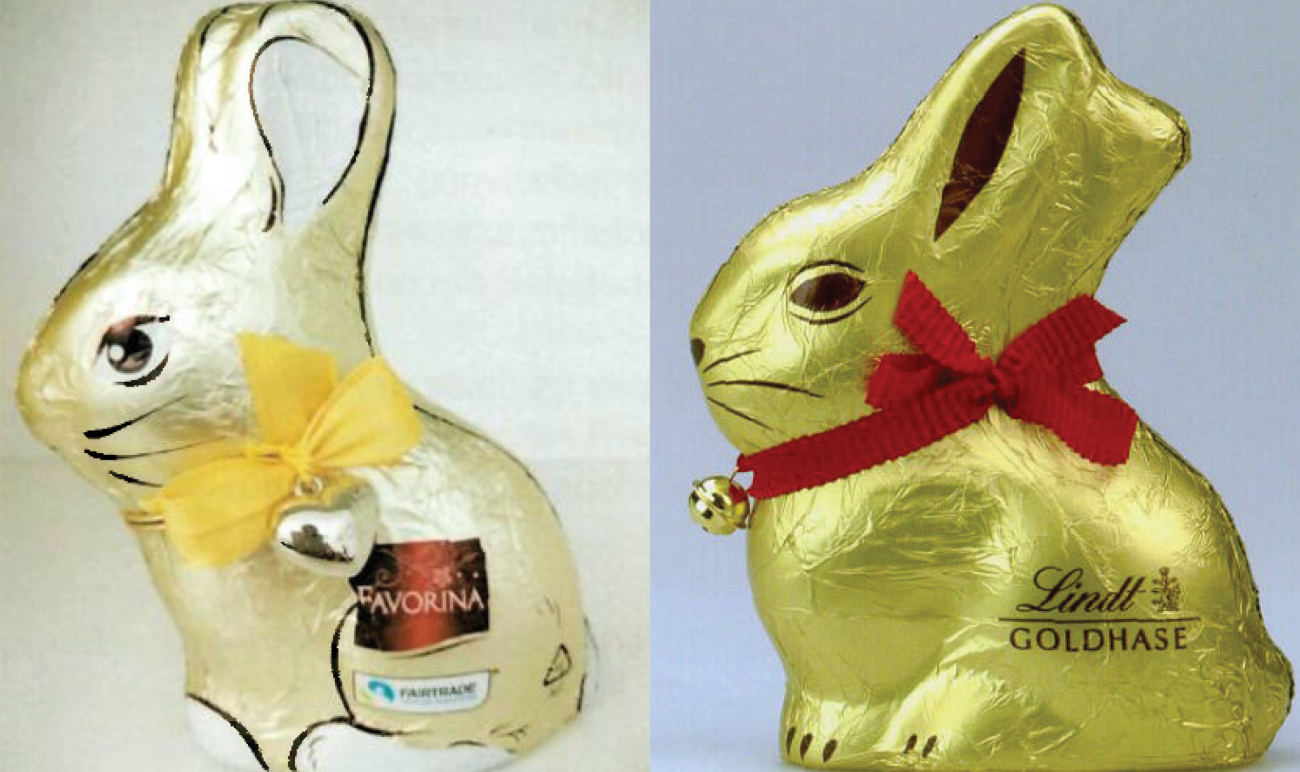

Lindt knows its market
The Swiss chocolate manufacturer Lindt & Sprüngli AG is one of the world’s biggest chocolate makers, renowned for its quality chocolate and gold foil covered Easter bunnies. Lindt has been making this famous gold bunny for Easter since 1952. To protect its intellectual property rights, Lindt has various trademark registrations, including in the European Union and Switzerland. For this Easter bunny, it even has a 3D shape trademark for chocolate confectionery, which protects its shape and appearance.
Registration of a shape trademark: it’s a thin line
The gold bunny, which is named Lindt Goldhase, and its trademark registrations are no stranger to courtroom battles. Just like ‘normal’ trademarks, the 3D shape trademark must be distinctive. From the shape, it must be possible to recognise that this is made by a certain manufacturer. A 3D shape trademark without the text Lindt Goldhase was therefore not accepted as registration, because the shape of an Easter bunny with standard decorations was not distinctive enough. The shape with the text Lindt Goldhase was accepted. It is a thin line between what can and cannot be registered as a shape trademark.
An important factor in the latest court case is that a shape trademark can also get its distinctiveness through becoming customary. When a (shape) trademark becomes customary, thanks to extended use among a target group, it becomes so well known that this non-distinctive trademark is immediately recognised as a trademark.
Lidl’s Goldhase summoned
Lidl was inspired by Lindt’s Easter bunny, and since 2017 has also been selling chocolate Easter bunnies in its supermarkets. With its gold-coloured packaging and bow with a bell, this Easter bunny very much resembles the Lindt Goldhase. Lindt was obviously not happy about having (another) Easter bunny with significant similarities on the market and took Lidl to court to ban the sale of Lidl’s Easter bunnies.
Initially, Lindt did not get the result it wanted. The court ruled that the shape trademark registration was not distinctive. The Easter bunny was too standard, and it was not proven that the shape trademark had become customary. Lindt did not leave it there and appealed for a ban by demonstrating that it had become customary for their Swiss trademark registration.
Lindt appeals Lidl judgement
In the appeal, consumer surveys provided by Lindt did prove that the bunny had become customary. The public recognise Lindt’s bunnies as being made by Lindt. The 3D shape trademark therefore was valid in Switzerland, so it was necessary to explore whether the use of Lidl could be seen as an infringement on this trademark registration. The court ruled that, despite its initial lack of distinctiveness, over the years Lindt’s Goldhase had become a strong trademark thanks to its popularity and Lindt’s (notorious) enforcement. The relevant public, who do not tend to be particularly observant, would not immediately notice the small deviations and could associate the Lidl bunnies with Lindt.
The court has ordered Lidl to remove the Easter bunnies from the market. Reflecting the idea of Easter, Lidl is not required to destroy the chocolate itself. It could introduce a new packaging or melt the chocolate and reuse it in a different mould.

A shape trademark that is distinctive and customary
It is possible to register shapes and protect them as a trademark. It is important that this shape is distinctive, so that the consumer specifically associates this shape with your company. Where there is a lack of distinctiveness, after extended use, this distinctiveness can still be acquired by becoming customary. A final interesting point from this ruling is that the court stated that Lindt’s trademarks were so strong due to their notorious enforcement.
You never know your luck
For less distinctive trademarks that are used for a long time, it is a good idea to continue defending your rights and conduct good market research to ensure they become customary. Even with less distinctive trademarks, you can still impose a ban on third parties.
Like Lindt, you never know your luck.
Kenmerkend newsletter
This article is part of Kenmerkend, the newsletter of NLO Shieldmark. In this quarterly newsletter you can read interesting articles about trademarks & designs models and the latest news from NLO Shieldmark. Would you like to stay informed? Subscribe to our newsletter!
Subscribe



